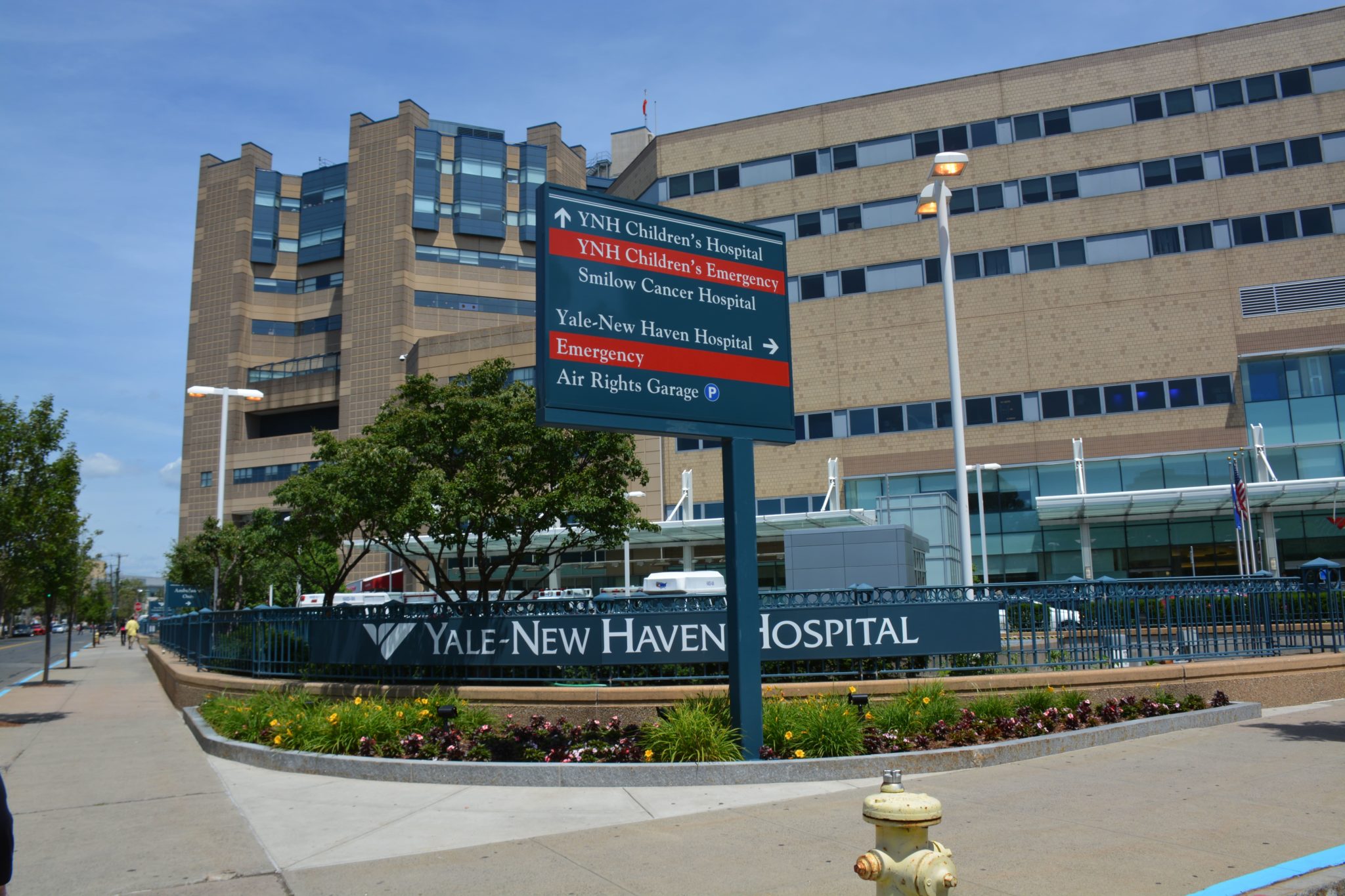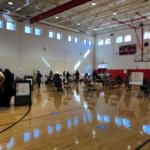
Yale Daily News
Despite high rates of effectiveness for both the Pfizer-BioNTech and Moderna COVID-19 vaccines, thousands of Yale New Haven Health System employees have not seized their opportunity to get it.
Vaccine rollout across the country has been left up to states, many of which have been hamstrung in their efforts to deliver the shots to people. YNHHS is on short supply of vaccine doses and is using every dose given. As of Friday morning, about 28,000 people across the system — including outside contractors and vendors as well as hospital staff — have received at least one dose of a coronavirus vaccine. More than 34,000 people have been invited to get the shot through YNHHS, as of Jan. 15.
As of last week, only 62 percent of YNHHS employees invited had scheduled appointments to get the vaccine. Some of the delays had to do with language barriers or difficulty navigating the scheduling system, but some employees were also hesitant to get vaccinated, according to Brita Roy, director of population health at Yale Medicine and one of the leaders of the YNHHS vaccine rollout strategy.
When the FDA approved the Pfizer-BioNTech vaccine in December, some Yale New Haven Hospital administrators — including Roy — sent out a survey of Yale Medicine and YNHHS employees to identify several reasons for vaccine hesitancy. People expressed trepidation about the unavailability of long-term follow-up data from trial participants as well as concerns that they were using up doses at the expense of more vulnerable populations. Out of a total of 3,523 respondents, one out of six said they were reluctant to get the vaccine in the current phase of vaccinations.
Across different types of jobs at YNHHS, there are some striking discrepancies in vaccination rates, Roy said in reference to the survey. Approximately 75 percent of physicians reported scheduling their vaccine appointments, Roy said, and over 90 percent of residents said they had scheduled appointments. But members of groups who worked in environmental services, transportation and food nutrition services at YNHHS are hovering around a 30 percent signup rate.
“That’s concerning, to have this kind of large variability,” Roy told the News. “And it does certainly suggest that there is hesitancy, especially amongst certain subgroups.”
As hospital administrators try to vaccinate a larger proportion of the hospitals’ workforce, they face both the logistical hurdles of distributing a vaccine with limited supplies and finicky storage requirements — such as the need for extremely cold temperatures — and employees’ concerns about getting the vaccine.
Vaccine hesitancy
In health care settings, vaccine hesitancy is a significant concern. About 15 percent of respondents to the survey — over 500 people — expressed reluctance to get the vaccine as soon as it became available to them.
The survey asked how likely people would be to get the vaccine if regulatory agencies deemed it safe and effective. It also asked how soon people would be willing to get the vaccine or, if they said they were unlikely to get the vaccine, what would make them comfortable getting it.
About 200 respondents said they wanted access to evidence of long-term follow-up for people who had gotten the vaccine. Some 75 people said nothing would make them feel comfortable. People reported concerns about vaccine safety and side effects and feared the studies were rushed or not transparent about their data. Some people altruistically felt they were not the most high-risk, and that other more vulnerable populations who should receive the shot first.
But the large majority of YNHHS medical staff expressed enthusiasm about the chance to get vaccinated.
Nadeen Hussain, a second-year internal medicine resident at Yale New Haven Hospital, told the News that she has received both doses of the Pfizer vaccine. Although she experienced localized muscle soreness after the first dose and a low-grade fever after the second one, she was able to go to work on both of the days she received the shots.
“If you had told me in March that I would be getting a vaccine in the same year, just nine months later, I would not have believed you,” Hussain said. “Actually getting the first shot in my arm in December of this year was just incredible, I feel so fortunate.”
As someone who is constantly interacting with patients, Hussain said she feels “good” about having the vaccine’s protection moving forward.
In a Jan. 4 press conference, YNHH Executive Director of Clinical Operations Ohm Deshpande said that the Moderna and Pfizer vaccines have been “studied exhaustively.”
“There is no medical or scientific reason about why you should be hesitant about getting this vaccine,” Deshpande said.
The right messaging
Community immunity cannot be attained unless a threshold proportion of the population is immunized — about 70 to 80 percent. But to vaccinate a wider population, YNHHS and other health care systems are working on the right messaging to confront false conspiracy theories and rumors about the vaccines.
To encourage people to get the vaccine, Roy said that YNHHS is considering sending reminder emails, letting people know that many have received the vaccine without ill effect and trying to release more information about vaccine development and clinical trials. Additionally, to employ a more bottom-up approach, the hospital may introduce vaccine ambassadors who speak to others about their experience getting the shot.
Sten Vermund, dean of the School of Public Health, worked with colleagues from the University of Michigan and cultural messaging leaders in Los Angeles’ entertainment industry to create a document that explains how to communicate to vaccine-hesitant people. Experts hope to tailor their messaging to the reasons people are hesitant to get vaccinated and affirm that a certain threshold proportion of the population must be vaccinated to reach community immunity — hopefully by this summer.
According to Time magazine, a focus group study by the Kaiser Family Foundation and ESPN’s The Undefeated found that, for Black Americans, chief concerns about getting vaccinated center on the prevalence of systemic racism and the legacy of unethical experiments. Vermund’s report states that effective communication to people hesitant for this reason would emphasize willingness to get the vaccine at some point rather than immediacy.
For people resistant to authority, often Republicans living in rural areas, effective communication means emphasizing that the decision to vaccinate is up to each individual and that they are being independent by deciding to get the shot, according to the document Vermund and other experts created.
Vermund said he hopes people will become more willing to accept the vaccine once they see many others receive it with minimal side effects.
At Yale through both YNHHS and Yale Health, about half of the people who qualify for Phase 1a — which includes health care workers and first responders — have received their first dose of the vaccine, Vermund said. Because there have been vaccine shortages, Yale has not had any leftover vaccines.
But as more vaccines become available, officials may face decisions over whether to convince people who are vaccine-hesitant to accept the shot or pass over them to those who are willing, Vermund mentioned.
Logistics of vaccine allocation
At present, vaccine allocation is designated at the state level. Connecticut generally tells the Yale New Haven Health System on Fridays how many doses the hospitals will receive the following Monday or Tuesday. Because that number corresponds with how many doses were used the week before, it is crucial for health care systems to vaccinate their workers in order to get a large supply of vaccines in following weeks.
The hospital system works with a modeler to understand the maximum number of vaccines they can administer each day and has set up new IT infrastructure to schedule online appointments.
Roy explained that each one of the Pfizer vials comes with six vaccine doses, while the Moderna vials come with 10 doses — all of which must be used within hours after opening a vial. Because of that, if a vial is opened and the number of people who come get their shots does not amount to multiples of six or 10, the hospital will have extra doses that may go unused. This can happen when people do not attend their scheduled appointments, Roy said.
To stop the doses from going to waste, different hospital units can send people who had scheduled appointments for a different day to receive the vaccine earlier, Roy said.
“Whatever gets sent to Connecticut we are getting into the arms of human beings, and that can’t be said of every state in the nation right now,” U.S. Sen. Chris Murphy said in a Jan. 4 press conference, after visiting YNHH’s vaccine storage facilities.
Administering two effective but non-interchangeable vaccines
The type of vaccine sent to a health care system can complicate the distribution, because the two are not interchangeable.
YNHHS began preparations to administer vaccines on Dec. 15, when they received their first shipment from Pfizer. According to Roy, the hospitals tried to ensure that people with the greatest risk of contracting COVID-19 — including emergency medicine, medical intensive care unit and food services staff — got the vaccine in the first two to three weeks.
Originally, YNHHS had anticipated receiving mostly Pfizer vaccines. However, Pfizer ended up being designated by the state as the primary supplier for Yale School of Nursing facilities, which were added to Phase 1a after YNHHS, according to Roy. As a result, YNHHS ended up getting mostly Moderna vials.
The Pfizer and Moderna vaccines have to be stored at different temperatures, posing yet another logistical hurdle. Additionally, someone who received the Pfizer vaccine for their first dose needs to get another Pfizer shot for their second dose, and the same applies to Moderna, Roy said.
“We knew we would have both [vaccines], but I think the shift in the percentage of each was something else we had to address,” Roy said.
After the hospital administers the vaccine, they monitor the recipient for at least 15 minutes — in case someone experiences an allergic reaction, she added.
Although some people have had adverse reactions, including a few severe allergic reactions and anxiety attacks, all those who experienced these symptoms have since recovered, Roy said.
In the coming weeks, the health system will scale up its vaccine infrastructure. On or around Jan. 18, it will begin vaccinating health care workers who are not a part of Yale’s health system as well as people 75 years of age or older.
As of Jan. 12, approximately 60 percent of vaccines that had been distributed to Connecticut had been administered, ranking the state third nationally in terms of vaccination rates.
Rose Horowitch | rose.horowitch@yale.edu
Maria Fernanda Pacheco | maria.pacheco@yale.edu
Update, Jan. 17: A paragraph explaining YNHHS’ system to avoid vaccine waste was mistakenly deleted during the editing process. It has been re-added to the story.









